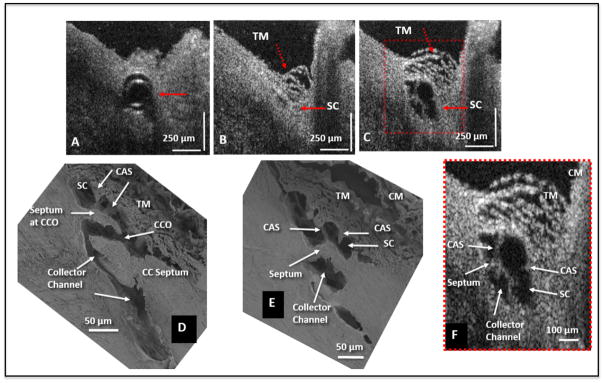Fig. 4.
Representative two-dimensional (2-D) structural OCT and scanning electron microscopy images from the limbal region of an eye. (A) shows the OCT image captured with the cannula inside Schlemm’s canal (SC) (arrow). The image location in (B) is ~150 μm away from the cannula tip and shows SC configuration before the infusion of perfusate. Arrows identify the TM and SC. In (C) the maximally dilated appearance of the same segment is visible after infusion of perfusate. (D) and (E) are representative SEM images from a radial limbal region, illustrating structural features of the outflow system that are mirrored in both the SEM and OCT images. (D) shows a collector channel entrance or ostia (CCO). A septum is present at the CCO that is attached to the TM by cylindrical attachment structures (CAS). (E) Is the adjacent section from the same segment showing the transition from the region of a CCO in (D) to a circumferentially oriented collector channel. (F) The 2X enlargement OCT image that is cropped from (C) permits a more detailed comparison of relationships. CM, ciliary muscle. Adopted from S. Hariri et al. Platform to investigate aqueous outflow system structure and pressure-dependent motion using high-resolution spectral domain optical coherence tomography. [non-human primate; M. nemestrina] Reproduced with permission from Hariri et al. (2014).

